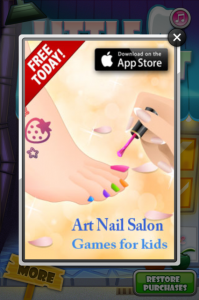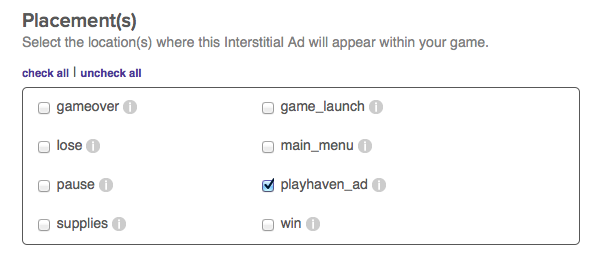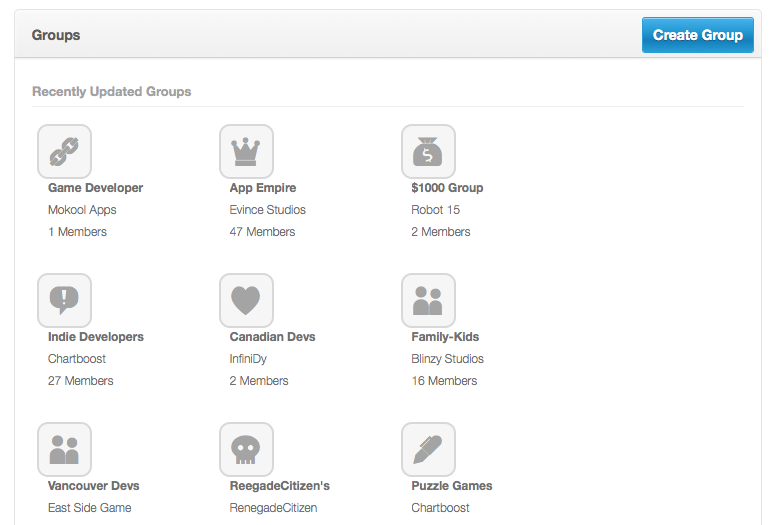Ads are a huge part of your monetization strategy in the current market (i.e. freemium market). Most successful apps practice this model, and thus users are used to seeing ads even in their favorite games. For the most part, they accept ads as part of the “price” of a free game. Statistically, we are seeing a shift towards more IAPs by users, however ads still play a very important role in your monetization strategy. A report by Gartner predicts that IAPs will rise from 17.3% of revenue to 40.9% of revenue in 2017, while advertising will essentially remain constant with 13.9% in 2017 compared to 13.7% in 2013.
However, to increase your eCPM (what you earn per 1,000 impressions) and overall ad revenue, it’s not just about throwing in ads, it’s about strategically placing and testing your ads. Let me start off by saying that not all ad strategies work universally. It varies by what type of experience you want for your user, and what type of monetization strategy you want for your apps. For example, there are cheaply made games or there are trend apps (ex: Gangnam Style app), which only retain customers for a couple months, and therefore you need to use ads heavily in that time due to the short shelf life. On the other side, there are well-made games that you want to have a long life span (evergreen apps), and therefore need strategic placement of ads to not put-off users. I’m not saying one is necessarily better than the other, I’m just letting you know you have your options.
However, any games that are paid should not have ads in them. If you price your game for $0.99 or above, users expect there to be no ads. Going against this grain (aka the market) can hurt your reviews and user retention. You can also provide users with the option to go PRO, which will remove ads, however for the best conversions, your PRO version needs to contain much more than just “removing ads” as a benefit. Removing adds alone does not convert like it used to.
Strategies that you can apply to most apps (and evergreen apps) for higher eCPM:
- When choosing your ads, remove any ads that would not seem relevant. Focus on your demographic. Who is inside your app? Would a My Pretty Hair Salon ad convert well in Ninja Racing Extreme? No.
- Use full page ads (these convert better than banner ads).
- Graphics! Make it pop. Make it quality. Don’t put too much copy in your ad.
- Put a sale in your ad: Three days only! This converts about 33% better than ads without “urgency” copy.
- Find the eCPM that’s working for you. Each service is different. Chartboost might have better eCPMs one month, and next month Revmob starts converting better. Alternatively, you could be getting horrible eCPMs from a company, and a friend of yours is getting great eCPMs in the same week. Like anything else with apps, don’t remain stagnant if something is not converting. Test everything!
- Advertise for your own apps as well. “You may also like…” on main screen instead of just on “More” page.
- Have users create profiles for your app or utilize Facebook for collecting user data through their profile. The key to conversions is understanding your demographic.
- Virtual Good Promotions (VGPs) for your IAPs. Some services will create graphical VGPs for you, or better yet, you can have your designer create an ad that pops for your IAPs.
Evergreen apps will require a bit more testing than “short-life” apps. You’re trying to create a user experience and therefore don’t want to ruin downloads with aggressive advertising. Usually having ads in the beginning won’t hurt, but once your user is past that part of your app, popping up too many ads can significantly hurt downloads and return users. You want your advertising to feel like a natural progression rather than blatant promotions. Consider that you can set times and frequency (return user, 3 minutes into the app, etc) that ads are released, which are great tools when trying to retain users but still have successful eCPMs.
Strategies when you have a “short shelf-life” app:
- Place advertisements at the beginning of your game. Use full screens ads and layer them. For example, a Revmob ad will pop up, and then a Chartboost will pop up right after.
- Fullscreens on Game Over.
- Fullscreens on Game pause.
- After a certain amount of levels or when your user has been in the game for a while, place a fullscreen ad before they hit the next level or other progression in the game.
- Include banner ads in combination with your fullscreen ads.
- Have killer graphics! You still need your ads to convert, so whether it’s for a cheap app or not, you need amazing graphics with enticing copy. “Check out this cool game!” is not enticing copy. Get creative!
- Cater to your networks top advertisers by making your game relate to their products. For example, if Candy Crush is a top advertiser make a candy/chocolate/treat-themed games to receive high conversions. Some services actually let you create direct deals with companies, which means more percentage for you so keep that in mind if you’re looking at ads as a main revenue stream. Chartboost has a large Direct Deals Marketplace:
I can’t emphasize enough the importance of testing when it comes to ad strategy. What may seem like a little change can create a huge impact on conversions. Use A/B testing to compare your timing, graphics, frequency, etc. at the same time in the same app. Since market data can change from week to week, testing it from one week to another won’t necessarily provide the most accurate insight compared to testing ad strategy at the same time. Also, remember to make changes one at a time. Changing too many elements of your ad strategy at once won’t give you insight into what particular move made a difference.
Most importantly, don’t be stagnant. Continually research what the market is doing with ad strategy. The App Store contains a wealth of information aside from app ideas alone.
P.S. If you haven’t already joined, Revmob’s special App Empire sign-up here.









